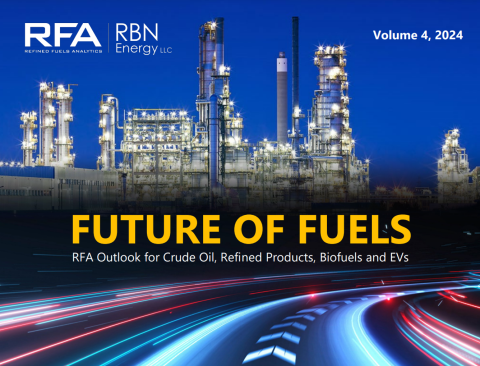The last few years have been filled with often-spirited debate about the global energy transition and the move away from fossil fuels to fully embrace renewables and alternatives to keep the lights on, fuel vehicles and power the world’s economy. But there are a growing number of signs that a swift shift from petroleum is not realistic, which has implications in many areas, including which refinery expansion projects move forward (and where), when oil demand might peak, and which of the many forecasts for gasoline and distillate production will prove to be the most accurate. In today’s RBN blog, we discuss highlights from the new Future of Fuels report by RBN’s Refined Fuels Analytics (RFA) practice, including RFA’s expectations for how a slower transition might affect producers, refiners and consumers.
Warning: Today’s blog is a blatant advertorial for RFA’s newly updated Future of Fuels report. Still, the blog — and the report — delve into topics that are highly relevant for a wide range of energy-industry participants and investors.
As we noted in February when we blogged about the previous edition of Future of Fuels (see We Just Disagree), there are glimmers that expectations are adjusting with realizations that energy use cannot realistically transition rapidly. That involves acknowledgement that gasoline, middle distillates (diesel and jet fuel), LPG, ethane and other hydrocarbons play critically important roles in improving the lives of billions of people in the developing world, and that shifting to non-hydrocarbon alternatives will take many years. We said at the time that plenty of folks needed to do even more rethinking and highlighted our contrarian take on the pace of refining capacity additions and product demand over the next few years.
The newly released fourth edition of Future of Fuels goes into extraordinary detail about how a slower approach to the energy transition is impacting markets. Here are some highlights from the report:
Join Backstage Pass to Read Full Article









